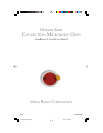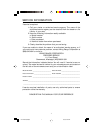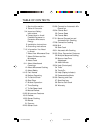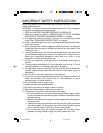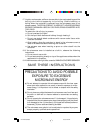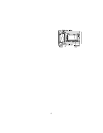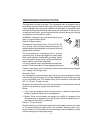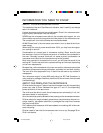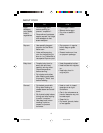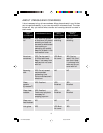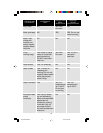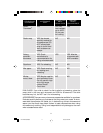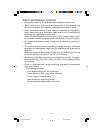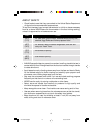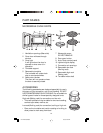
4
17. Liquids, such as water, coffee or tea are able to be overheated beyond the
boiling point without appearing to be boiling. Visible bubbling or
boiling when the container is removed from the microwave oven is not
always present. THIS COULD RESULT IN VERY HOT LIQUIDS SUDDENLY
BOILING OVER WHEN A SPOON OR OTHER UTENSIL IS INSERTED INTO
THE LIQUID.
To reduce the risk of injury to persons:
a. Do not overheat the liquid.
b. Stir the liquid both before and halfway through heating it.
c. Do not use straight-sided containers with narrow necks. Use a wide-
mouthed container.
d. After heating, allow the container to stand in the microwave oven at
least for 20 seconds before removing the container.
e. Use extreme care when inserting a spoon or other utensil into the
container.
18. If the microwave oven is installed as a built-in, observe the following
instructions:
a. Do not mount over a sink.
b. Do not store anything directly on top of the appliance surface when the
appliance is in operation.
19. If the microwave oven light fails, consult a VIKING AUTHORIZED SERVICER.
SAVE THESE INSTRUCTIONS
PRECAUTIONS TO AVOID POSSIBLE
EXPOSURE TO EXCESSIVE
MICROWAVE ENERGY
(a) Do not attempt to operate this microwave oven with the door open
since open-door operation can result in harmful exposure to micro-
wave energy. It is important not to defeat or tamper with the safety
interlocks.
(b) Do not place any object between the microwave oven front face and
the door or allow soil or cleaner residue to accumulate on sealing
surfaces.
(c) Do not operate the microwave oven if it is damaged. It is particularly
important that the microwave oven door close properly and that there
is no damage to the: (1) door (bent), (2) hinges and latches (broken or
loosened), (3) door seals and sealing surfaces.
(d) The microwave oven should not be adjusted or repaired by anyone
except properly qualified service personnel.
1.VK DMC205/E#363 2/3/04, 8:25 AM4



